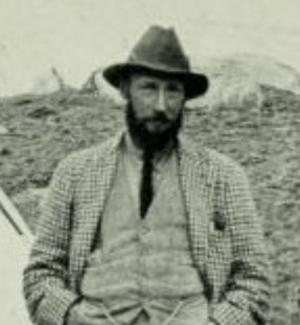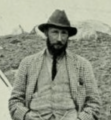Charles Howard-Bury facts for kids
Quick facts for kids
Charles Howard-Bury
|
|
|---|---|
 |
|
| Member of Parliament for Chelmsford |
|
| In office 30 November 1926 – 7 October 1931 |
|
| Preceded by | Henry Curtis-Bennett |
| Succeeded by | Vivian Henderson |
| Member of Parliament for Bilston |
|
| In office 15 November 1922 – 9 October 1924 |
|
| Preceded by | T. E. Hickman |
| Succeeded by | John Baker |
| Personal details | |
| Born | 15 August 1881 Charleville Castle, King's County, Ireland (now County Offaly) |
| Died | 20 September 1963 (aged 82) Mullingar, County Westmeath, Republic of Ireland |
| Parents |
|
| Education | Eton |
| Alma mater | Royal Military College, Sandhurst |
| Known for | 1921 Mount Everest reconnaissance expedition |
Charles Kenneth Howard-Bury (born August 15, 1881 – died September 20, 1963) was a fascinating person from Ireland. He was a soldier, an explorer, a botanist (someone who studies plants), and even a politician. He is best known for leading the first expedition to explore Mount Everest in 1921.
Contents
Early Life and Education
Charles Howard-Bury was born in Charleville Castle, County Offaly, Ireland. He was the only son of Captain Kenneth Howard-Bury. His mother was Lady Emily Alfreda Julia.
He went to two famous schools. First, he studied at Eton College, a well-known school in England. After that, he attended the Royal Military College, Sandhurst. This is where people train to become officers in the army.
Adventures Before 1921
From a young age, Charles loved climbing. This passion led him to explore the big mountains in the Austrian Alps.
In 1904, he joined the King's Royal Rifle Corps, a British army regiment. He was sent to India, where he traveled a lot. He also enjoyed big game-hunting during his time there.
In 1905, he secretly entered Tibet, a country in Asia, without getting permission. He was told off by Lord Curzon, a powerful British official. Charles kept detailed diaries of his travels. These notes show he was very observant and knew a lot about nature. He was also good at learning languages.
When World War I began, Charles rejoined his army regiment. He fought bravely as an officer on the front lines. In 1918, he was captured by German forces. He managed to escape from the prisoner-of-war camp. However, he was caught again ten days later.
The 1921 Mount Everest Expedition
Planning the Expedition
In 1920, a man named Sir Francis Younghusband asked Charles Howard-Bury to help with a big plan. The goal was to explore Mount Everest, the world's highest mountain. Charles successfully prepared the way for this important journey.
In 1921, Charles became the leader of the Mount Everest Reconnaissance Expedition. This trip was organized by the Mount Everest Committee. This committee was a joint effort between the Alpine Club (for climbers) and the Royal Geographical Society (for explorers).
After the expedition, Charles wrote a book about their adventures. It was called "Mount Everest The Reconnaissance, 1921."
The "Abominable Snowman" Story
During the 1921 expedition, Charles Howard-Bury and his team found some strange footprints high up on the mountain. Charles thought they were probably made by a large wolf.
However, the local guides, called Sherpas, had a different idea. They said the tracks belonged to a "metch kangmi." This phrase meant "filthy snowman."
Later, a newspaper reporter named Henry Newman heard about these tracks. He got descriptions from the expedition's porters when they returned. Newman then mistranslated "metch kangmi" as "abominable snowman." This is how the famous phrase "Abominable Snowman" came to be in 1921.
Newman later wrote that he thought the story was "a joyous creation." He sent it to several newspapers. This led to the Yeti (another name for the creature) being called the "Abominable Snowman." This name made it sound more like a funny story than a serious scientific topic.

For his great leadership of the expedition, Charles was given the 1922 Founder's Medal. This is a special award from the Royal Geographical Society.
Political Career
The Everest expedition made Charles Howard-Bury famous. In 1922, he was elected to the House of Commons. This is part of the British Parliament, where laws are made. He represented the area of Bilston as a Conservative politician.
He lost his seat in 1924 but was elected again in 1926. This time, he represented Chelmsford. He stopped being a Member of Parliament in 1931. He also held important local roles in County Westmeath, Ireland.
Later Life
Charles Howard-Bury never married. He passed away on September 20, 1963, when he was 82 years old. He left his home at Belvedere to his friend, Rex Beaumont.
Legacy
In 2013, two British adventurers, Matthew Traver and Jamie Bunchuk, honored Charles Howard-Bury. They rode horses for 750 miles across Eastern Kazakhstan. They did this to celebrate 100 years since Charles traveled through that region. He was on his way to the Tian Shan mountains in 1913.
Images for kids


